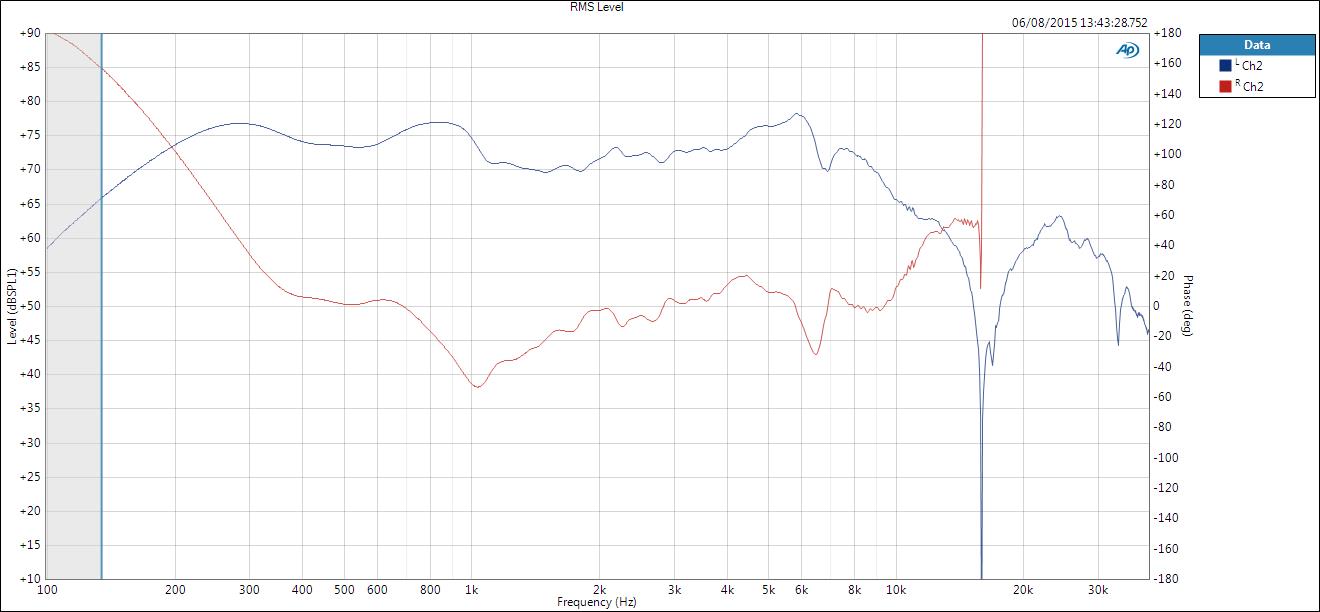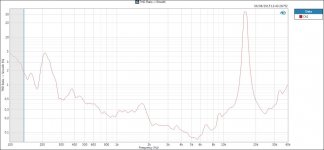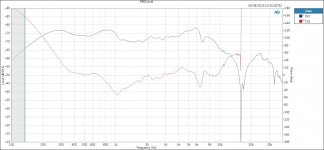If al is true pretty good the huge peak won't be there since it is crossed before I guess. Not bad at all ,wonder what the efficiency is. They say the used copper traces. That's weird.
There is allot of false information in there website to the comparison with an esl and saying how light there membrane is although it a hefty 12 and 25 micron with copper ash wel I am veery curious how they sound and perform in real life . Looking forward to you having them haha
ash wel I am veery curious how they sound and perform in real life . Looking forward to you having them haha
There is allot of false information in there website to the comparison with an esl and saying how light there membrane is although it a hefty 12 and 25 micron with copper
It is made of plasma sputtered copper on kapton. These guys make lab equipment and know their way around:
Tecnomotive - Equipments for Science
The peak in the top end is normal because the freq. drops down:

Tecnomotive - Equipments for Science
The peak in the top end is normal because the freq. drops down:
Attachments
Only the midrange.
Ok it explains the dip. probably exactly the distance between left and right transducer.
It is the phase curve.
aaaaaaaaaahhhh
well it seems to be an elegant twist on the AMT principal in that it has a unique magnet arraingment. The thickness of the Kapton is about 2 to 3 times what would often be used in ribbons so a bit heavy BUT if well damped, as this method tends to be due partly to the magnified air load, then maybe a non issue.
The statment that its a dipole unlike AMTs ? Im sure you can make an amt as a dipole. As well im sure an amt could be made with a seperate tweeter section in the middle just as this one is.
Interesting and clever design. Please let us know how it goes with the only judge that trully matters, your ears
The statment that its a dipole unlike AMTs ? Im sure you can make an amt as a dipole. As well im sure an amt could be made with a seperate tweeter section in the middle just as this one is.
Interesting and clever design. Please let us know how it goes with the only judge that trully matters, your ears
well it seems to be an elegant twist on the AMT principal in that it has a unique magnet arraingment. The thickness of the Kapton is about 2 to 3 times what would often be used in ribbons so a bit heavy BUT if well damped, as this method tends to be due partly to the magnified air load, then maybe a non issue.
The statment that its a dipole unlike AMTs ? Im sure you can make an amt as a dipole. As well im sure an amt could be made with a seperate tweeter section in the middle just as this one is.
Interesting and clever design. Please let us know how it goes with the only judge that trully matters, your ears
hmm i think i did not explain myself clearly
My claim is if the magnets are numbert 1-2-3-4-5-6. you could make the same with only magnet 1-3-4-6 then it would be a normal AMT with a tweeter sektion with only one fold ?.
yes you could, i guess efficiency would be a tad lower maybe
Hallo Few.
The sweet spot.. right, unfortunately I don't know much about that.
Increasing L might increase the force all other things being equal but there has to be a limit because if we keep increasing L and the force would continue to increase too we would end up with extracting more energy that we put in.
So how does that work -forces; gaps and conductor loops ( L ) and how much will that FEMM simulation help. I haven't seen anything about the influence of an iron plate, does FEMM neglect that?
I don't mind spending a little money on (1000) magnets but I would highly appreciate help from FEMM experts in order to avoid buying the wrong magnets. If more conductor loops are not as efficient as less or just one conductor, I rather look for a material like a magnesium alloy that have a much higher resistance then Alumin in order to get a reasonable resistance
for a given length.
The membrane will be much lighter that way.
Do you have FEMM results for one VS more conductor runs?
Edmund
Hello Edmund,
I'm still on the right side of the turf, as the old saying goes. I don't have a drawing handy (I can make one later if it turns out to be necessary). It's been awhile, but I think the point was that I could use closely spaced magnets with a single conductor in the magnet gap, or use a wider magnet gap that would accommodate two conductors. The magnetic field strength is smaller in the wide-gap case but you make up for it by having a BL product (field strength times length of conductor) that is twice as large. In fact, I had concluded you more than make up for it for the two cases I was comparing.
In general the driving force depends on the product B x L as described above. Using parallel rows of magnets, widely spaced, reduces B (the magnetic field) but makes room for more runs of the conductor, which increases L. You have to look at both parameters to decide where the sweet spot is for your application.
Few
The sweet spot.. right, unfortunately I don't know much about that.
Increasing L might increase the force all other things being equal but there has to be a limit because if we keep increasing L and the force would continue to increase too we would end up with extracting more energy that we put in.
So how does that work -forces; gaps and conductor loops ( L ) and how much will that FEMM simulation help. I haven't seen anything about the influence of an iron plate, does FEMM neglect that?
I don't mind spending a little money on (1000) magnets but I would highly appreciate help from FEMM experts in order to avoid buying the wrong magnets. If more conductor loops are not as efficient as less or just one conductor, I rather look for a material like a magnesium alloy that have a much higher resistance then Alumin in order to get a reasonable resistance
for a given length.
The membrane will be much lighter that way.
Do you have FEMM results for one VS more conductor runs?
Edmund
Clever trick
@Few
I had a thought while driving home last night of an acoustic reason why segmented quasi-ribbons may not work like segmented ESLs. It concerns % open area and the resulting response of each of the ribbon segments. Before I bother going any further, can you confirm what typical open area is for the back plate of the single ended quasi ribbon? I remember examining an MMG some years ago and was surprised to find only rows of very small holes between the magnets. Estimated open area for the MMG backplate would be <10%. Is this typical?
its also the only place where the can be holes
- Status
- This old topic is closed. If you want to reopen this topic, contact a moderator using the "Report Post" button.
- Home
- Loudspeakers
- Planars & Exotics
- Planar magnetic with central tweeter?



